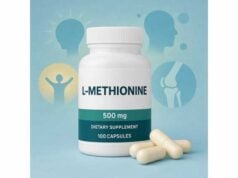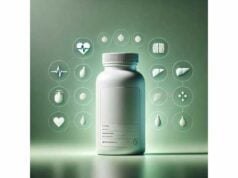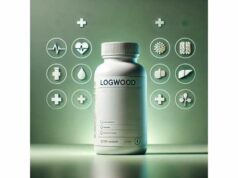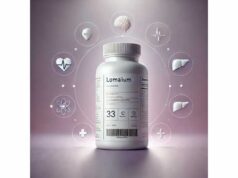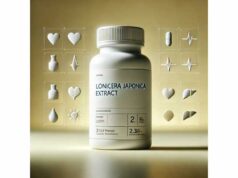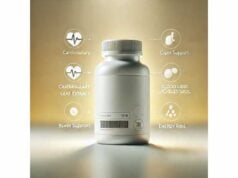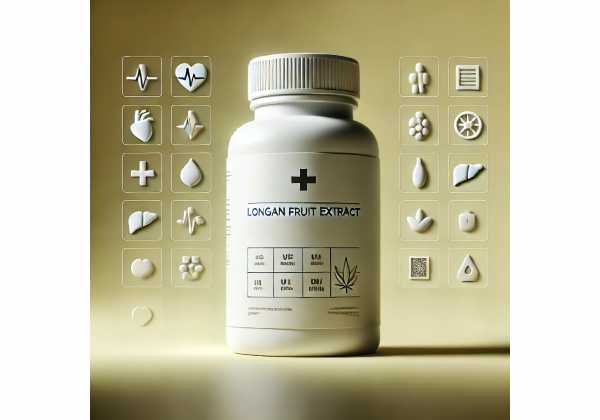
Longan (Dimocarpus longan) is a sweet, grape-like fruit from Southeast Asia whose flesh—called the arillus—has a long history in traditional formulas. Modern extracts concentrate its polyphenols (such as gallic acid and corilagin), polysaccharides, and vitamin C, aiming to deliver antioxidant, calming, and skin-supportive effects in a small dose. Interest has grown around longan’s potential to help with oxidative stress, occasional sleeplessness when used in combination formulas, and healthy immune signaling. Extracts also appear in beauty-from-within blends and “focus and calm” nootropic stacks. While lab and animal research is promising, human trials remain limited, so expectations should stay measured. If you’re curious about longan fruit extract, this guide explains what it is, how it might work, how to use it safely, dosage considerations, who should avoid it, and where the evidence stands today.
Quick Overview
- Antioxidant-rich extract that may support healthy stress responses and skin appearance.
- Early evidence suggests potential calming and sleep-supportive effects, especially in combination blends.
- Typical capsule servings: 250–500 mg, 1–2 times daily; traditional decoction: 6–15 g dried aril.
- Safety caveat: high intakes may upset gut balance; start low and assess tolerance.
- Avoid if pregnant, breastfeeding, or with active inflammatory bowel disease unless a clinician agrees.
Table of Contents
- What is longan fruit extract and does it work?
- Science-backed benefits and how it works
- How to choose and use longan extract
- Dosage: how much per day?
- Side effects, interactions, and who should avoid it
- Evidence snapshot and research gaps
What is longan fruit extract and does it work?
Longan (Dimocarpus longan Lour.) belongs to the soapberry family (Sapindaceae), alongside lychee and rambutan. The edible part used in supplements is the dried flesh (arillus). In traditional practice, the arillus is described as “sweet” and “warm” and is commonly combined with other botanicals for calm mood, restful sleep, and healthy blood. Modern extracts concentrate the fruit’s bioactive compounds, notably:
- Polyphenols: gallic acid, ellagic acid derivatives, corilagin, and other tannins that can scavenge free radicals.
- Polysaccharides: long-chain carbohydrates that may modulate immune activity in preclinical models.
- Vitamin C and organic acids: including L-ascorbic and malic acids that add antioxidative capacity and tart-sweet flavor.
“Does it work?” depends on outcome and dose. In cell and animal models, longan constituents show antioxidant, anti-inflammatory, and neuro-calming activities. Extracts from pulp, peel, and seed have each demonstrated bioactivities, with seed extracts often richest in polyphenols. Small human data exist mostly within multi-herb beverages or capsules (for example, bedtime blends with Ziziphus). These suggest potential support for sleep quality and perceived calm; however, they do not isolate longan as the sole active. That means any benefits you experience likely come from a synergy of compounds—or a combination formula—rather than a single, proven, standalone effect.
Practically, longan extract is best considered a supportive ingredient rather than a direct replacement for clinically established therapies. If you’re seeking gentler antioxidant support, or a calming adjunct to good sleep hygiene, a standardized longan extract can be reasonable to try—provided you keep the dosage moderate, watch your response, and coordinate with your clinician if you take medications or have conditions affected by blood sugar or gut health.
Science-backed benefits and how it works
1) Antioxidant and cellular defense
Longan peel, seed, and aril all contain phenolic compounds capable of neutralizing reactive oxygen species in chemical assays and protecting lipids from peroxidation in cell systems. In animals, longan byproduct polyphenol extracts have shown hypolipidemic effects, with improvements in serum lipids and hepatic antioxidant enzymes. While these findings haven’t yet translated into robust human trials, they offer a mechanistic rationale for cardiovascular and skin “beauty-from-within” positioning: lower oxidative burden often correlates with healthier-looking skin and better lipid profiles.
2) Calming and sleep support (often in blends)
Longan arillus appears frequently in traditional “night-time” formulas. Preclinical work suggests GABAergic modulation and reduced neuroinflammation as plausible pathways. In the marketplace, longan is commonly paired with Ziziphus jujuba (jujube seed), schisandra, or magnesium. Early human pilot data using such combinations report improved subjective sleep quality and shorter sleep latency. Since longan is not isolated in those trials, think of it as a helpful co-star rather than the sole lead.
3) Immune modulation via polysaccharides
Longan polysaccharides have shown the capacity to influence macrophage and T-cell activity in vitro and in animal models. These effects are context-dependent: the same extract might enhance surveillance in one model and dampen excessive cytokine signaling in another. This bidirectional tendency is typical of many mushroom and plant polysaccharides, and it aligns with the idea of immune modulation rather than simple “boosting.”
4) Metabolic and liver support (preclinical)
In rodent models fed high-fat diets, longan polyphenol fractions improved total cholesterol, LDL-C, and triglycerides while supporting endogenous antioxidant enzymes like SOD and catalase. The proposed mechanisms include bile acid modulation and inhibition of lipid peroxidation in hepatocytes. It’s too early to claim clinical lipid-lowering efficacy for humans, but the direction of effect is favorable and consistent with polyphenol-rich foods.
5) Skin and collagen signals
Antioxidant extracts can reduce matrix metalloproteinase (MMP) activity in cell models, potentially slowing collagen breakdown under UV or pollution stress. Longan seed polyphenols, particularly ellagitannins, are candidates for these actions. This underpins longan’s use in nutricosmetic blends aimed at hydration and firmness, paired with vitamin C, hyaluronic acid, and ceramides.
6) Gut considerations and microbiome
At moderate intake, fruit polyphenols can support short-chain fatty acid (SCFA) production via microbial fermentation. However, excess longan arillus has been shown in mice to disturb microbial diversity and aggravate chemically induced colitis—an important safety nuance. Translation to humans is not direct, but it argues for moderation and for caution in those with active inflammatory bowel conditions.
Bottom line: longan extract offers plausible antioxidant, calming, and immune-modulating value with supportive preclinical data. Meaningful human evidence is still developing, so it’s best used as part of a broader lifestyle approach: sleep hygiene, balanced diet, and—if relevant—clinician-guided care.
How to choose and use longan extract
Pick the right part and standardization
Longan supplements may list arillus (pulp), seed, peel, or a blend.
- Arillus (pulp): gentler flavor, traditional use for calm and sleep support; moderate polyphenols plus vitamin C and organic acids.
- Seed: highest polyphenol content; more potent antioxidant activity; can be astringent.
- Peel: also polyphenol-rich; often used in research-grade extracts, less common in retail.
Look for labels that indicate:
- Plant part (arillus/seed/peel) and extraction solvent (water, ethanol/water).
- Standardization to a marker (e.g., total polyphenols, gallic acid equivalents).
- Heavy metals and microbial testing; third-party certifications add confidence.
Form factors and pairings
- Capsules/tablets: the most common (typically 250–500 mg per serving).
- Powders: mixable in warm water or tea; check for added sweeteners.
- Traditional decoction: simmer dried aril with water; often combined with jujube or goji in traditional recipes.
- Combination formulas: longan with Ziziphus, L-theanine, magnesium, or lemon balm for night-time blends; or with collagen/vitamin C for skin.
Timing
- For calm/sleep support: evening dosing makes sense, 30–60 minutes before bedtime, especially in combination formulas.
- For antioxidant/metabolic support: morning or with meals can be appropriate; consistency matters more than timing.
Quality red flags
- Vague labeling (“longan complex” with no plant part or standardization).
- Proprietary blends that hide low ingredient amounts.
- Excess added sugars in powders—counterproductive if you’re monitoring glucose.
Stacking wisely
- For stress and sleep: consider a minimal, well-composed stack (e.g., longan arillus + magnesium glycinate + theanine).
- For skin: pair with vitamin C and collagen peptides; add ceramides for barrier support.
- For metabolism: focus on diet first; if using polyphenol blends, keep caffeine moderate to avoid sleep trade-offs.
Sustainability note
Peel and seed are often byproducts of the fruit industry. Extracts derived from byproducts reduce waste; this is a plus if the brand discloses it.
Dosage: how much per day?
There is no universally accepted clinical dose for longan fruit extract. The following ranges reflect common practice, traditional use, and available preclinical-to-practice translation. Use them as conservative starting points, not medical directives.
Modern supplement forms
- Standardized extract capsules (arillus or polyphenol-rich fractions): 250–500 mg per serving, taken once or twice daily. New users should begin at the low end (250 mg once daily) for 3–5 days to gauge tolerance.
- Seed or peel extracts (higher astringency and polyphenols): start even lower (200–300 mg once daily), then titrate if well tolerated.
Traditional preparations
- Decoction of dried longan aril: 6–15 g per day simmered in water (often combined with jujube), split into two servings. This aligns with classical ranges used in herbal formulas.
- Tea or infusion: 5–10 g dried aril steeped 10–15 minutes; milder than decoction.
Bedtime blends
- In multi-herb sleep products, longan arillus is commonly present at 100–300 mg per serving alongside primary actives (e.g., Ziziphus). Because evidence is stronger for the combination than for longan alone, follow the product’s label and avoid doubling doses.
Weight and sensitivity adjustments
- Smaller bodies or those with sensitive digestion: start at half a capsule or shorter steep times.
- Larger bodies: a second 250–500 mg serving may be reasonable if the first is well tolerated and your clinician agrees with the plan.
Upper bounds and prudence
- Preclinical work suggests that very high intakes of longan arillus can disturb gut balance. Pragmatically, avoid exceeding 1,000 mg/day of concentrated extract or 15–20 g/day of dried aril unless a qualified practitioner has recommended and is monitoring it.
When to stop or reassess
- New digestive discomfort, loose stools, skin flushing, or a wired-but-tired feeling warrant pausing and retrying at a lower dose—or discontinuing if symptoms persist.
- If stacking with multiple calming agents (e.g., theanine, magnesium, passionflower), reduce the total stack before increasing longan.
Side effects, interactions, and who should avoid it
Common tolerance
Most people tolerate moderate doses of longan arillus extract without issue. Because longan is naturally sweet, powders and teas may add carbohydrate to your day; extracts in capsules avoid most added sugars.
Possible side effects
- Digestive changes: bloating, loose stools, or, less commonly, constipation—especially at higher intake or when switching suddenly from low to high polyphenol consumption.
- Gut sensitivity: in animal models, excess longan arillus aggravated experimental colitis. People with a history of inflammatory bowel disease (IBD) should avoid high intakes and consult their clinician before use.
- Astringency: seed/peel extracts can cause a dry mouth feel; take with food or switch to arillus-based products.
Interactions
- Sedatives or sleep agents: combination products aiming for calm may add to drowsiness—start low and do not mix with alcohol.
- Glucose-lowering drugs: longan is sweet; while extracts add little sugar, traditional decoctions and dried fruit can influence post-prandial glucose. Monitor carefully if you use insulin or oral hypoglycemics.
- Anticoagulants/antiplatelets: polyphenol-rich botanicals can theoretically influence platelet function. If you take warfarin, DOACs, or high-dose fish oil, keep your clinician in the loop.
- Allergies: those allergic to lychee or other Sapindaceae fruits should exercise caution.
Who should avoid it (or require medical guidance first)
- Pregnant or breastfeeding individuals: insufficient safety data—avoid unless your obstetric provider approves.
- Active IBD or significant GI inflammation: risk of symptom aggravation at higher intakes—avoid unless supervised.
- Children: no established dosing; food amounts of fresh fruit are fine, but concentrated extracts should be clinician-directed.
- Upcoming surgery: stop all nonessential supplements, including longan, 1–2 weeks beforehand unless your surgical team advises otherwise.
Quality and contamination risks
Buy from reputable brands that disclose plant part, extraction solvent, polyphenol standardization, and third-party testing. Avoid powders with excessive added sugars or undisclosed “proprietary” blends.
Overdose scenarios
Very high extract intakes may cause abdominal discomfort, diarrhea, or restlessness. Stop use, hydrate, and seek care if symptoms are severe or persistent.
Evidence snapshot and research gaps
What’s strongest today
- Antioxidant capacity: consistent across in vitro assays and animal models for pulp, peel, and seed extracts.
- Hypolipidemic signals (preclinical): improved serum lipids and hepatic antioxidant enzyme activity in rodents given longan polyphenol fractions.
- Immune modulation: longan polysaccharides influence innate and adaptive immune markers in preclinical systems.
- Safety at moderate doses in animals: aqueous longan seed extract did not show significant toxicity in acute and repeated-dose studies.
What’s promising but preliminary
- Sleep and calm: human signals primarily come from combination formulas (e.g., with Ziziphus). Direct, high-quality randomized trials of longan extract alone are limited.
- Skin and collagen: cellular and animal findings support anti-MMP and antioxidant effects; clinical nutricosmetic trials are needed.
Clear cautionary notes
- Excess intake can upset gut homeostasis in mouse colitis models, with reduced microbial diversity and increased inflammatory signals. While we cannot simply extrapolate dose and risk to humans, the direction of effect reinforces a “start low and stay moderate” principle—especially if you have GI conditions.
What good future trials should include
- Standardized extracts by plant part and solvent, with validated polyphenol/polysaccharide content.
- Clinically relevant outcomes: sleep efficiency (actigraphy), mood scales, lipid panels, photodamage biomarkers for skin, and GI comfort.
- Dose–response and duration: at least 8–12 weeks for metabolic or skin outcomes; 2–4 weeks for sleep/calm endpoints.
- Safety monitoring: GI events, glucose metrics (in decoction users), and potential interactions with sedatives or anticoagulants.
Bottom line
Longan fruit extract is reasonable as a supportive tool for antioxidant, calm, and skin-oriented goals, best used at moderate doses, and ideally within combination formulas that have early human data. Treat it as a complement to—not a replacement for—sleep hygiene, balanced nutrition, stress management, and clinician-guided care.
References
- Longan Arillus: A comprehensive review of botany, traditional uses, phytochemistry, pharmacologic activities, pharmacokinetics, quality control, toxicity, and clinical applications 2025 (Systematic Review)
- Extraction, purification, structural features and biological activities of longan polysaccharides: A review 2022 (Systematic Review)
- Excessive Intake of Longan Arillus Alters gut Homeostasis and Aggravates Colitis in Mice 2021 (Preclinical)
- Polyphenol Profile, Antioxidant Activity, and Hypolipidemic Effect of Longan Byproducts 2023 (Preclinical)
- Safety evaluation of longan seed extract: acute and repeated oral administration 2012 (Toxicology Study)
Disclaimer
This article is for educational purposes only and does not provide medical advice. Longan fruit extract is not intended to diagnose, treat, cure, or prevent any disease. Always speak with a qualified healthcare professional before starting, changing, or stopping any supplement—especially if you are pregnant or breastfeeding, have a medical condition, or take prescription medications.
If you found this guide helpful, consider sharing it with friends or colleagues on Facebook, X (formerly Twitter), or your favorite platform, and follow us for more practical wellness explainers. Your support helps us continue creating evidence-informed articles.

